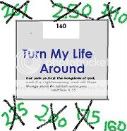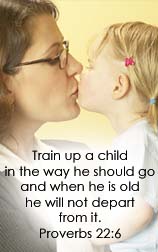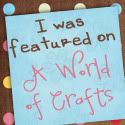We are going to be focusing on Ancient Rome for history quite a bit this year in our homeschool. Therefore, when we were given the opportunity to learn Latin using Picta Dicta Natural World from Roman Roads Media, I was quite excited.
Thanks to the Homeschool Review Crew, I have again been introduced to a wonderful, new-to-me company. Roman Roads Media provides classical curriculum in several different subjects. In addition to Latin, they provide courses in Old Western Culture, Logic, Rhetoric, Poetry, and History for both home and classroom use. They also provide live classes.
Picta Dicta is an online vocabulary course where the student learns the English, Latin, and even Greek for things in nature (with Picta Dicta Natural World) or concepts in the ancient world (with Picta Dicta Ancient World). These two courses are suitable for elementary or junior high students (for the Ancient World course). Additionally, there is a Picta Dicta course for older students (junior high, high school, and college) called Vocabulary Builder, where students learn general reading vocabulary to help them become proficient in reading Latin.
As my children are all in elementary grades, I chose to review Picta Dicta Natural World.
This course is completely online, so all that is required is a computer with internet access. We were given 5 licenses, which was perfect for our family, as all four children plus mommy could learn Latin. It was quite simple to set up our account, seeing as a step-by-step video is provided. We were actually sent a link via email which I clicked on to go to the page with all the instructions. First I had to set up an account with Picta Dicta, then I added each student and enrolled them in our course, which is Natural World. After that I set each of us up in the appropriate "campaign" or difficulty level. I was a bit concerned that I wouldn't pick the correct level; however, I learned that it is quite easy to change levels if necessary. There are six different levels to choose from: Basic, English, Reader I, Reader II, Express, and Teacher.
Here is what my dashboard looks like after it was all set up.
It shows that we are subscribed to the Natural World course with five seats, all of which are being used. If I want to change a child's level at any time, all I have to do is click on the edit pencil icon to the right of their name.
I put Harold and Hannah in Basic which means they will be learning both the English and the Latin words, helping to build their English vocabulary along with learning the Latin. With this level they are also able to have the information read to them.
I put Amelia in Reader I, as I figured she didn't need to learn the English, but she could use help reading the information passages, especially if they were long. Imagine my surprise when I realized she was still going to be learning the English vocabulary, and didn't have long informative passages to read. For now, I have decided to keep her in this level, as it is giving her a chance to improve her vocabulary and work on spelling, though I do wish this level included the informative articles.
I put Tabitha is Reader II, as she is more advanced in her reading. She does have informative articles about each word, not just a sentence or two describing the word. She has been learning the Latin plus will have to spell both English and Latin. She just gets to skip the actual learning of the English word.
I put myself in the Express level as I do not need to learn the English, I just wanted to focus on learning the Latin.
Here is how we actually use the program.
From my account I can go to my lessons, the children; however, need to log in to their own account. Then we will see a version of the following screen.
Each of the different levels have a slightly different screen as they have a different number of lessons. My screen above shows that I have three different lessons for each chapter. Hannah and Harold have five lessons, Amelia has eight, and Tabitha has five. All of the children also have review activities scheduled in between chapters. The way I would review older lessons with an Express level, is to go to "Train" at the upper right corner, or I could go to the actual lessons, but that isn't necessary.
In each of these levels, the student will learn new vocabulary by viewing one picture at a time along with descriptive information (just one or two sentences for the easier levels, full paragraph articles for the more difficult levels). Once several words have been learned, the student will practice picking that object out of a group of six. Then more words are taught, and the student goes through the same process. If mistakes are made, the student will be shown the answer, and will get another chance to answer later in the session. There are about 15-20 words taught per chapter.
Here, let's take a look at one of my lessons.
First I am shown a picture of the object along with the word in Latin. Sometimes the program automatically says the word, other times I have to click on it. If you need to hear it again, all you have to do is click. It is important that you repeat the word, so you learn how to pronounce it. On the bottom of the page there is an article related to the object in regards to ancient Roman culture.
Real quick, remember I stated that younger children don't have to read an article? They just get a couple of sentences describing the word, which can be read to them if needed.
Once I am done, I click the "thumbs up" icon in the bottom right corner (not shown in these screenshots). Each click takes me to a new word, until it is time to see how much I remember.
First the word is shown. Again, the computer may say the word automatically, other times it needs to be clicked. I love the opportunity to hear the word and see its spelling as many times as I need to.
Then I have to choose the correct picture. You can do this by clicking on the picture, or typing in the letter at in the gray circle to the lower right of the picture.
Notice they don't use the English word under the picture. The idea of this program is to know what the picture represents, not just rely on the English word. Because it is the same object/animal/whatever no matter which language it is in.
If the correct image is chosen you get a green check, otherwise you get a red "x" and it shows you the correct picture so you can practice it. Later in the lesson another chance is given. In fact, you continue being corrected and given chances until you get it correct.
Once you finish that section you receive a score which is shown with 1-5 stars depending on how many questions were correct.
They are also recorded on the main screen. I did notice that when I only got one star on my "Latin- Picture II" activity they changed the replay icon back to a play icon on the previous activity, indicating that I should practice again. I do love that a student could continue to go back into the lessons to improve their score.
Another way that the program has you practice the vocabulary is to show you the picture with the caption. . .
. . .and have you find the correct word.
You are given a check mark if you are correct, or a "x" if you are wrong.
You continue working until you have gotten each word in the chapter correct.
For all levels these steps are about the same. As I mentioned younger children will also do these steps with the English words. Additionally, older children will have the chance to work on spelling. Reader I and Reader II get to practice both English and Latin spelling, while students using the Express level only practice Latin spelling.
Again, the student is shown the image with the descriptive caption.
Then a screen with a box at the top appears. The student needs to type the word and press enter.
If you are correct, you get a check mark again.
If you get it wrong, either because you didn't know the correct word, or you spelled it incorrectly, it will show you the picture again, with the correct spelling of the word underneath it.
Once a chapter is finished, a student is free to move along to the next chapter, or they can play the practice games. Again, these vary according to level.
To get to the games, a student would click the "train" icon which looks like a set of barbells in the top right corner of the screen.
First you select the chapter(s) you want to practice.
Then you select the specific game.
These games are all similar to the activities a student would do in the lesson, such as clicking on the picture when shown the word, or choosing the word when shown the picture. You could also practice spelling English or Latin after seeing the word or the picture. With my level, I could even test my knowledge on the information in the article. Younger children would test their information on the descriptive information.
There are so many opportunities to practice these words so that we can memorize them. I love that we can hear the correct pronunciation and see the spelling, along with a picture of the object. All in all, we are going to be learning over 400 nouns in 26 different chapters to help give us a wonderful foundation in several subjects: future Latin study, English literature, foreign language, history and the sciences. I can already see this, with the history lessons we have been learning through the articles, the science info connecting Latin words to English in Anatomy, and how Latin words relate to other English words. We will be learning about different kinds of animals, different categories of anatomy, and different things from nature, including landforms, water, and different kinds of plants.
This is a program that all of the children have been enjoying. They have computer time at least 4 times a week, and they spend a little bit of time on Latin each day. They may do one or two activities in a sitting, maybe more. There is no set amount of time that needs to be spent on Picta Dicta as it is self-paced. The only real concern we have come across is Amelia swearing up and down that she typed a word in correctly, yet being marked wrong. The problem is, she could think she was correct, but may have had a typo or started typing early and the first letter didn't register (I've had that happen). It is imperative for students to check their spelling before clicking enter in the spelling sections.
Other than that, we are absolutely loving Picta Dicta Natural World. I was thrilled the one day when I was sitting in the living room and heard Hannah exclaim from the computer in the dining room, "I LOVE Picta Dicta!!"
That about sums it up.
Don't forget to click on the banner below to see what my fellow Crew Mates had to say about the products they reviewed from Roman Roads Media. In addition to Picta Dicta Natural World, you will find reviews of Picta Dicta Vocabulary Builder, and Fitting Words Classical Rhetoric (complete program).

















































![[PREMIO2009.png]](https://blogger.googleusercontent.com/img/b/R29vZ2xl/AVvXsEjXD_Gx-wZ9EM5hXKrEYLksEBkYfRQtmb8VDVTDG_yyLggQoFIstZsh4zszdG20KqErZicRzEhiNYLty7j3IMXJYsABqkXjr8pp-ncj71xCbpxlXGbGpZq2fTuDQqq1RMKV4DPcDBnBViA/s1600/PREMIO2009.png)




No comments:
Post a Comment
Thank you for visiting my blog today. I love to read your comments, so please leave me one if you have the time.
Blessings